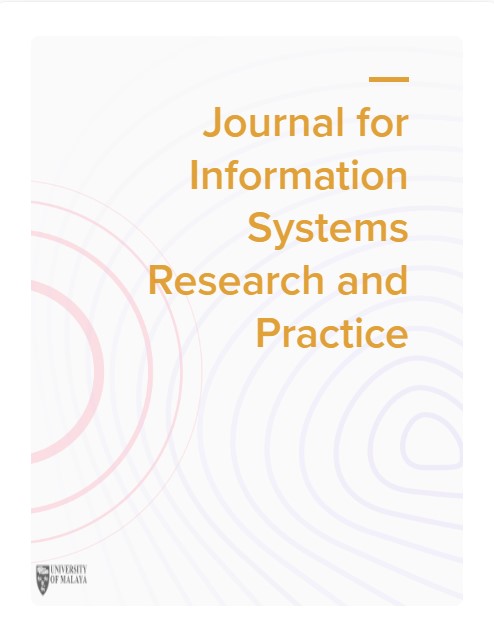Enhancing Profitability: Multi-Utility Range Algorithm for High Utility Itemset Mining
Keywords:
Association Rule Mining; High Utility Range; Low Utility Range; Support and Confidence.Abstract
Association rule mining is a critical domain within data mining, aimed at uncovering interesting relationships between variables in large datasets. Traditional algorithms for association rule mining primarily rely on support and confidence metrics, which often fall short of addressing the complexities of real-time applications. High-utility itemset mining has emerged as a promising solution, offering significant insights by identifying items of substantial value to users. In this paper, we introduce a novel multi-utility range algorithm for computing high-utility itemsets. This algorithm is particularly advantageous for profit-oriented applications as it allows for the adjustment of utility ranges, thereby enabling the extraction of more valuable items. Our approach not only enhances the relevance of the mined itemsets but also provides flexibility in targeting different utility thresholds, making it highly effective for dynamic and real-time data analysis scenarios.
Downloads
References
Vivekanandan, S.J., Gunasekaran, G. A novel way to compute association rules. Int J Syst Assur Eng Manag 15, 98–109 (2024). https://doi.org/10.1007/s13198-022-01676-4
Alhusaini, N., Karmoshi, S., Hawbani, A., Jing, L., Alhusaini, A., & Al-sharabi, Y. (2019). LUIM: New Low-Utility Itemset Mining Framework. IEEE Access, 7, 100535-100551.
Yang, Q., Fu, Q., Wang, C., & Yang, J. (2018). A Matrix-Based Apriori Algorithm Improvement. In 2018 IEEE Third International Conference on Data Science in Cyberspace (DSC) (pp. 824-828). IEEE.
Sun, L. (2020). An Improved Apriori Algorithm Based on Support Weight Matrix for Data Mining in Transaction Database. Journal of Ambient Intelligence and Humanized Computing, 11, 495-501.
Sandhu, P. S., Dhaliwal, D. S., Panda, S. N., & Bisht, A. (2010). An Improvement in Apriori Algorithm Using Profit and Quantity. In 2010 Second International Conference on Computer and Network Technology (pp. 3-7).
Wang, C., & Zheng, X. (2020). Application of Improved Time Series Apriori Algorithm by Frequent Itemsets in Association Rule Data Mining Based on Temporal Constraint. Evolutionary Intelligence, 13, 39-49.
Gupta, G. K. (2019). Introduction to Data Mining with Case Studies (3rd ed.). PHI Learning Pvt. Ltd.
Al-Maolegi, M., & Arkok, B. (2014). An Improved Apriori Algorithm for Association Rules. International Journal of Next-Generation Computing, 3(1), 12-20.
Sandhu, P. S., Dhaliwal, D. S., Panda, S. N., & Bisht, A. (2010). An Improvement in Apriori Algorithm Using Profit and Quantity. In 2010 Second International Conference on Computer and Network Technology (pp. 3-7). IEEE. https://doi.org/10.1109/ICCNT.2010.46
Narmada, D., Naveen, G., & Geetha, S. (2011). An Efficient Approach to Prune Mined Association Rules in Large Databases. International Journal of Computer Science Issues, 8(1), 283-289.
Wu, L., Gong, K., He, Y., Ge, X., & Cui, J. (2010). A Study of Improving Apriori Algorithm. In 2010 2nd International Workshop on Intelligent Systems and Applications (pp. 1-4). IEEE. https://doi.org/10.1109/IWISA.2010.5473450
Ji, L., Zhang, B., & Li, J. (2006). A New Improvement on Apriori Algorithm. In 2006 International Conference on Computational Intelligence and Security (pp. 840-844). IEEE. https://doi.org/10.1109/ICCIAS.2006.294255
Wang, K., Zhou, Q., & Yeung, Y. (2005). Mining Customer Value: From Association Rules to Direct Marketing. Data Mining and Knowledge Discovery, 11, 57-79.
Vivekanandan, S. J., & Gunasekaran, G. (2019). A Survey on Association Rules Mining. Asian Resonance, 8(1), 12-25.
Vivekanandan, S. J., & Gunasekaran, G. (2019). A Survey on Utility Mining. Asian Resonance, 8(1), 38-51.
Agrawal, R., Imielinski, T., & Swami, A. (1993). Mining Association Rules between Sets of Items in Large Databases. ACM SIGMOD Record, 22(2), 207–216.
Agrawal, R., & Srikant, R. (1994). Fast Algorithms for Mining Association Rules. Proceedings of the 20th VLDB Conference Santiago. Chile. 1994, 487–499.
Shankar, S., Purusothaman, T., Jayanthi, S., & Babu, N. (2009). A Fast Algorithm for Mining High Utility Itemsets. IEEE International Advance Computing Conference, 2009, 1459–1464.
Yao, H., Hamilton, H. J., & Butz, C. J. (2004). A Foundational Approach to Mining Itemset Utilities from Databases. Proceedings of the Third SLAM International Conference on Data Mining, Orlando, Florida, 482–486.
Yao, H., & Hamilton, H. J. (2006). Mining itemset utilities from transaction databases. Data and Knowledge Engineering, 59(3 SPEC. ISS.), 603–626. https://doi.org/10.1016/j.datak.2005.10.004
Brijesh Bakariya, & G.S. Thakur. (2015). An Efficient Algorithm for Extracting High Utility Itemsets from Weblog Data. IETE Technical Review, 32(2), 151–160.
Vivekanandan, S., & Gunasekaran, G. (2023). A Computation of Frequent Itemset using Matrix Based Apriori Algorithm. International Journal of Experimental Research and Review, 30, 247-256. https://doi.org/10.52756/ijerr.2023.v30.022
Vivekanandan, S. J., and G. Gunasekaran. An improvisation on Apriori algorithm applied in medical transaction. Journal of Green Engineering (2020): 8574-8586.
Published
How to Cite
Issue
Section
License
Copyright (c) 2024 Journal of Information Systems Research and Practice

This work is licensed under a Creative Commons Attribution-ShareAlike 4.0 International License.





